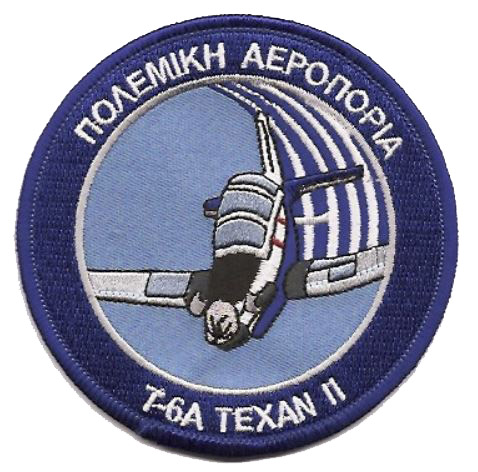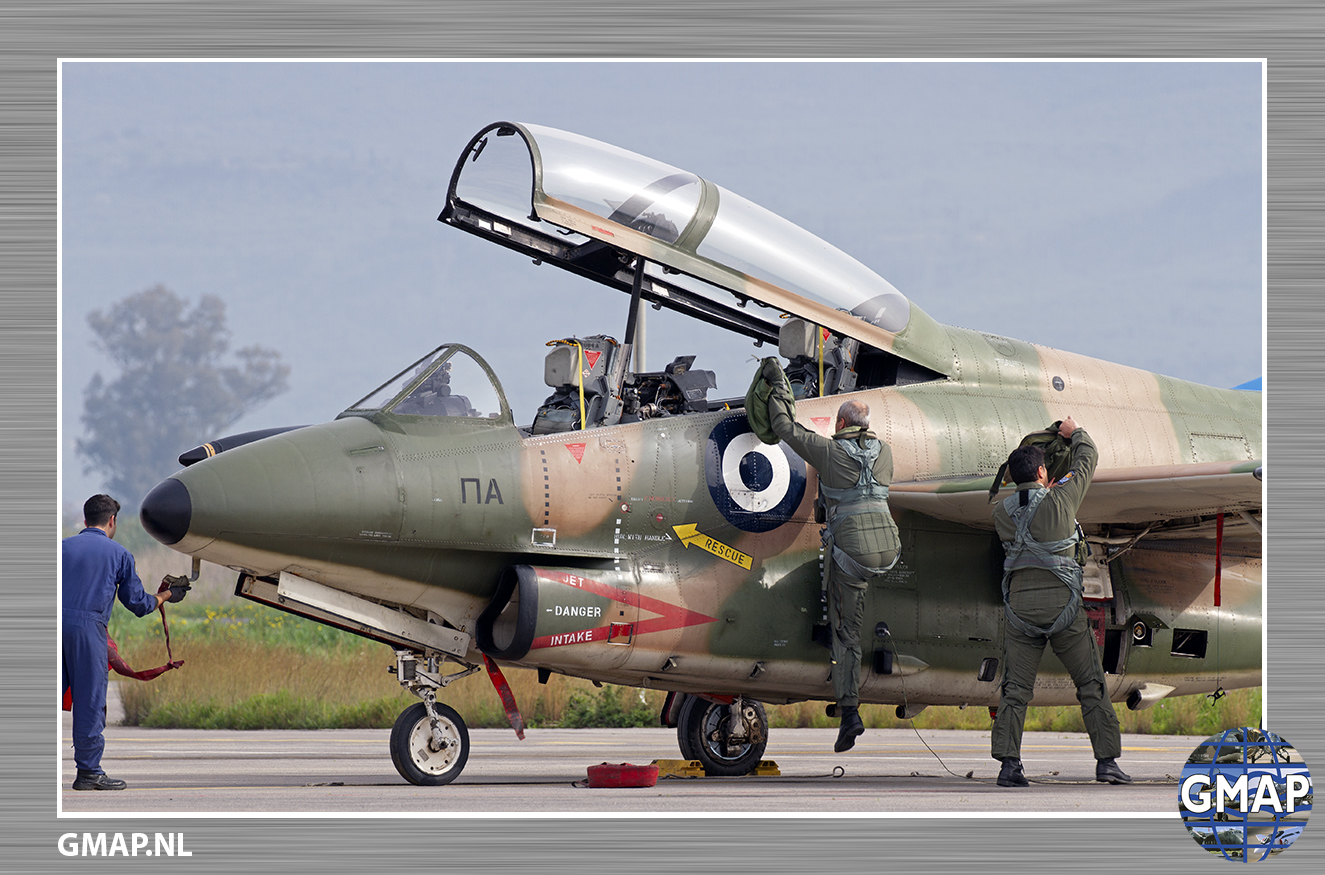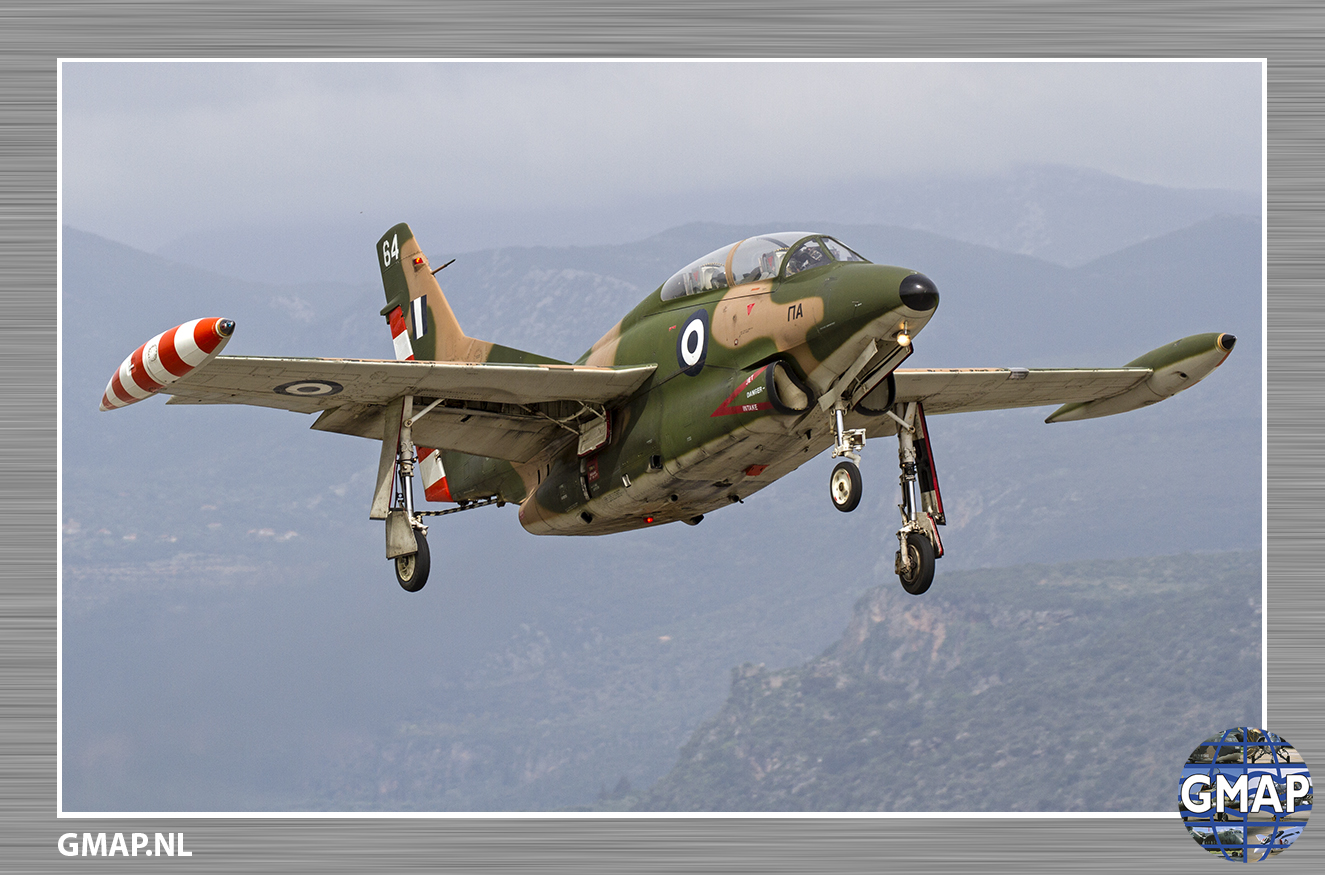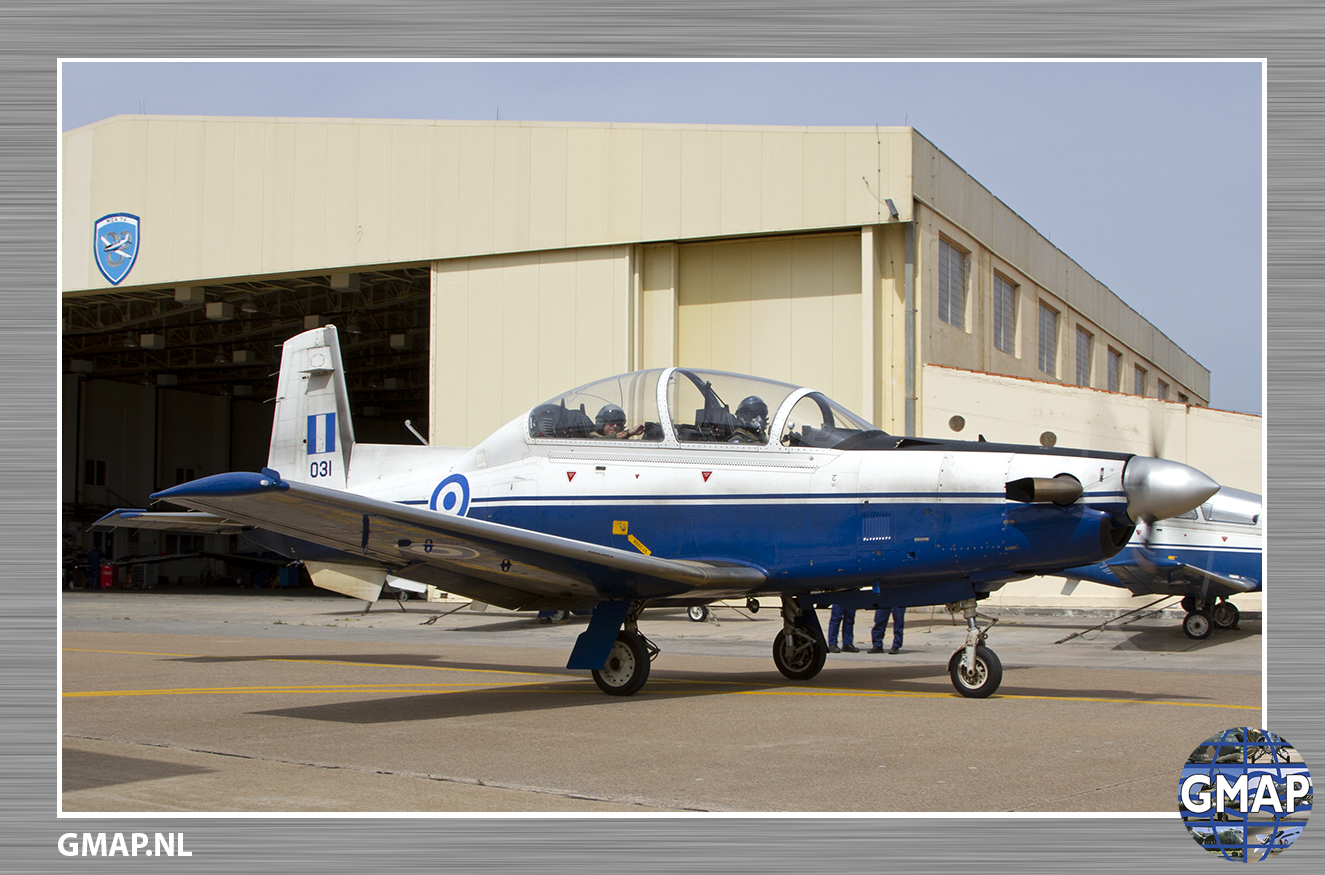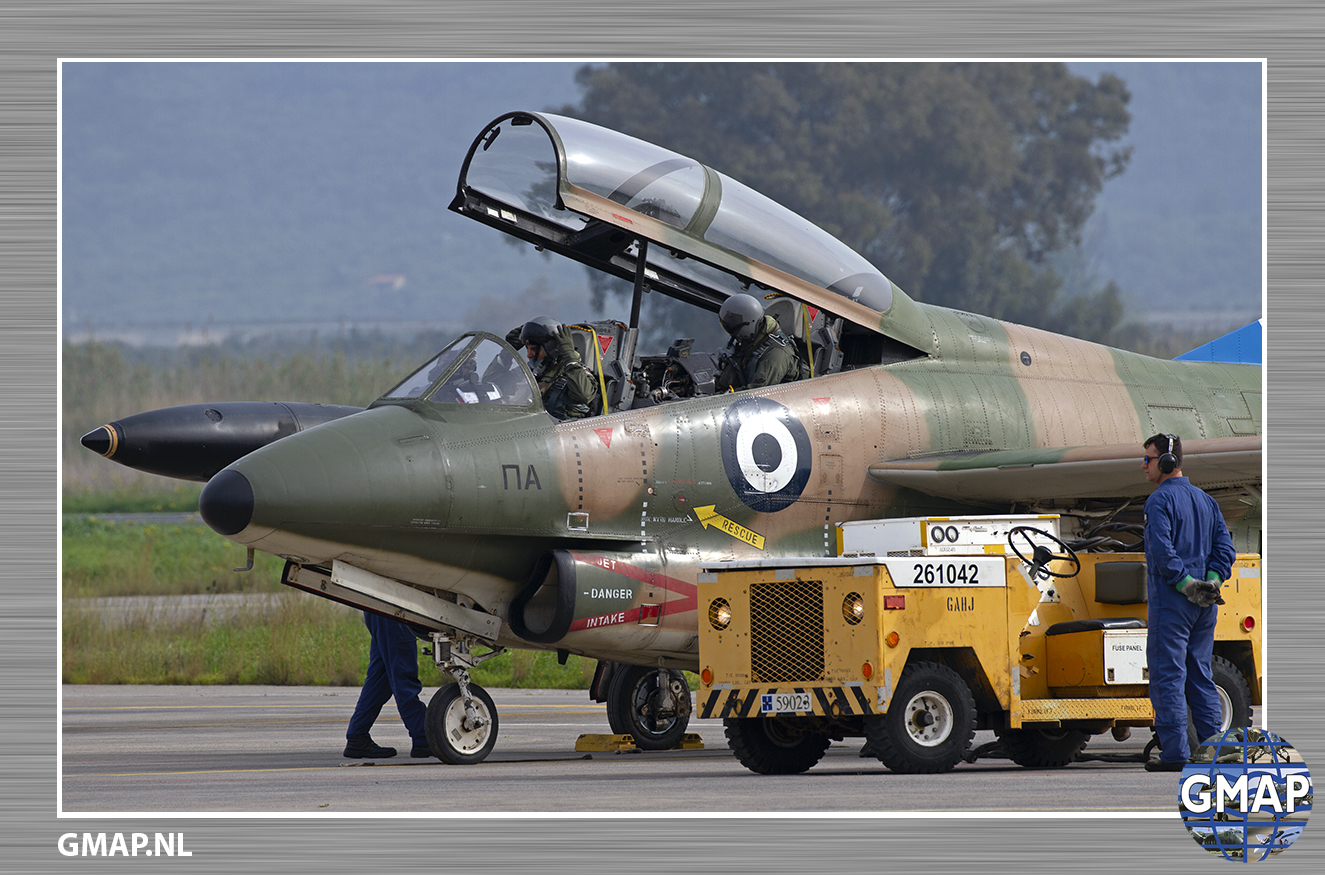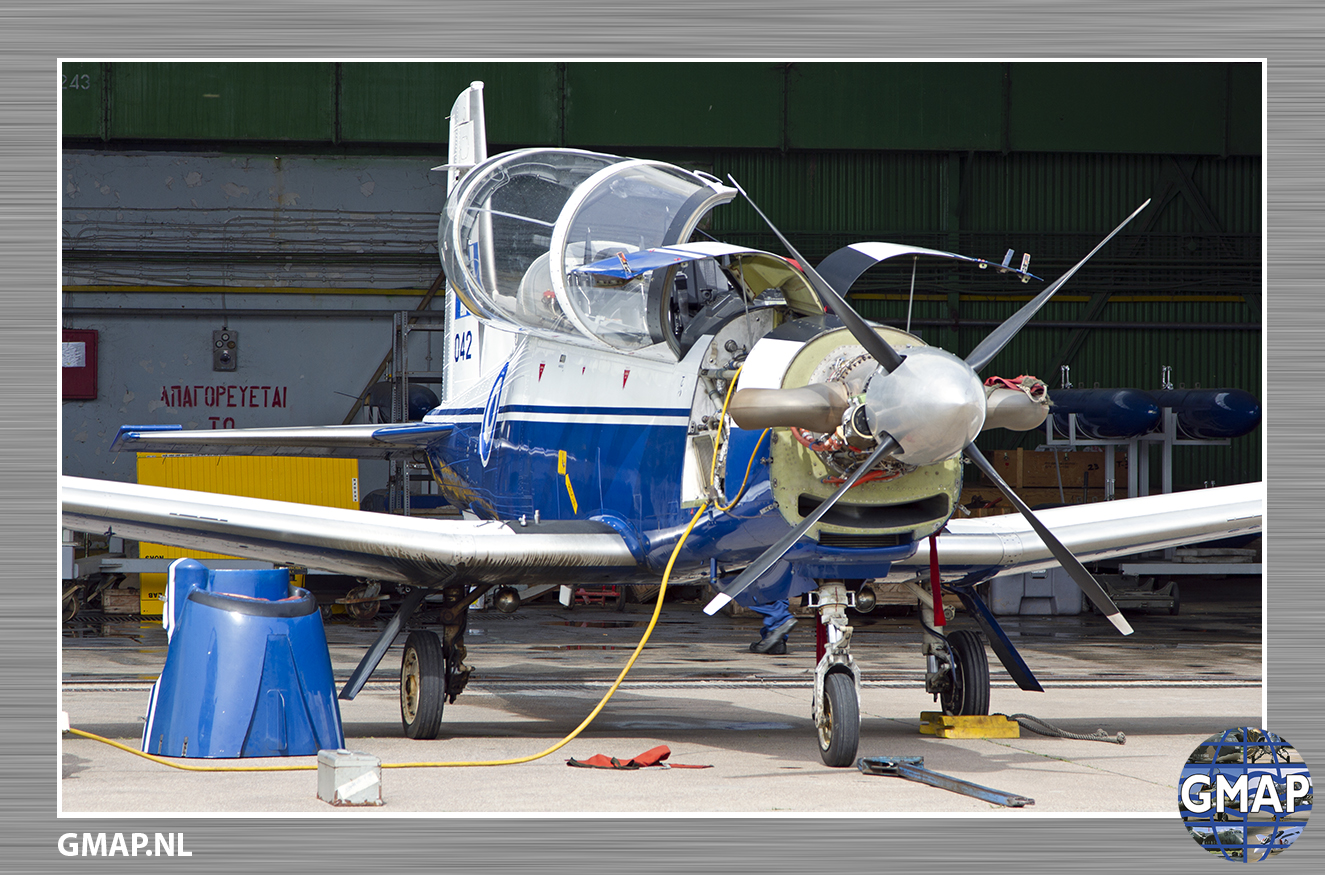All future pilots start their career at Tatoi-Dekelia, a HAF-base just Northeast of Athens. If found suitable for flying, they will have their first flights on the T-41D Mescalero, operated by 360 MEA. The elementary flying lessons will continue for approximately three months after which those who eventually qualify will continue at Kalamata for the next phase in their journey to become a pilot at the HAF.
After arriving at Kalamata, a student will be assigned to one of the two T-6A units for the second and third phase of the training. During these phases, the student will go thru the initial – or second – stage and basic – or third – stage of the training. The initial phase comprises topics like flight procedures & safety, standardisation and aircraft systems, while the basic stage deals with topics like meteorology, decision-making, teamwork and leadership.
During the initial phase, the student will fly approximately 55 hours on the T-6 while another 75 hours is flown during the during the basic stage. Besides actually flying the T-6, the student will also spend considerable time on the flight simulator and make use of computer based training (CBT) to practice his/her skills further. By the time the second phase is concluded, almost two and a half years have gone by since the first day the training started at Tatoi-Dekelia.
Before moving on to phase four (the final phase), the student will first go back to Tatoi-Dekelia to finish all theoretical exams. Once passed, he/she goes back to Kalamata where the next phase starts with a new aircraft: the T-2 Buckeye. Basically, the same steps will be repeated: both air and ground based trainings by use of the T-2; flight simulators and CBT. In this stage (which last for six months), the student will fly approximately 80 hours or 70 sorties on the T-2 Buckeye to gain experience in flying a high performance jet. Like the T-6, the majority of the time will be flown together with an instructor.
Once phase four has concluded, the advanced phase of the training has come to an end. By this time, the students will be selected to either start flying a fighter-jet a transport aircraft or helicopter. Those who are selected to become a fighter-pilot will continue to fly on the T-2 for another 60 hours, to train on weapons and further improve their air-to-air and air-to-ground skills. Another six month of training will go by, before the student will join the Operational Conversion Unit (OCU) at one of the major HAF bases to become acquainted with the new fighter-type. Those who will become a pilot on a transport aircraft will continue training on the T-6 for another period of time.









